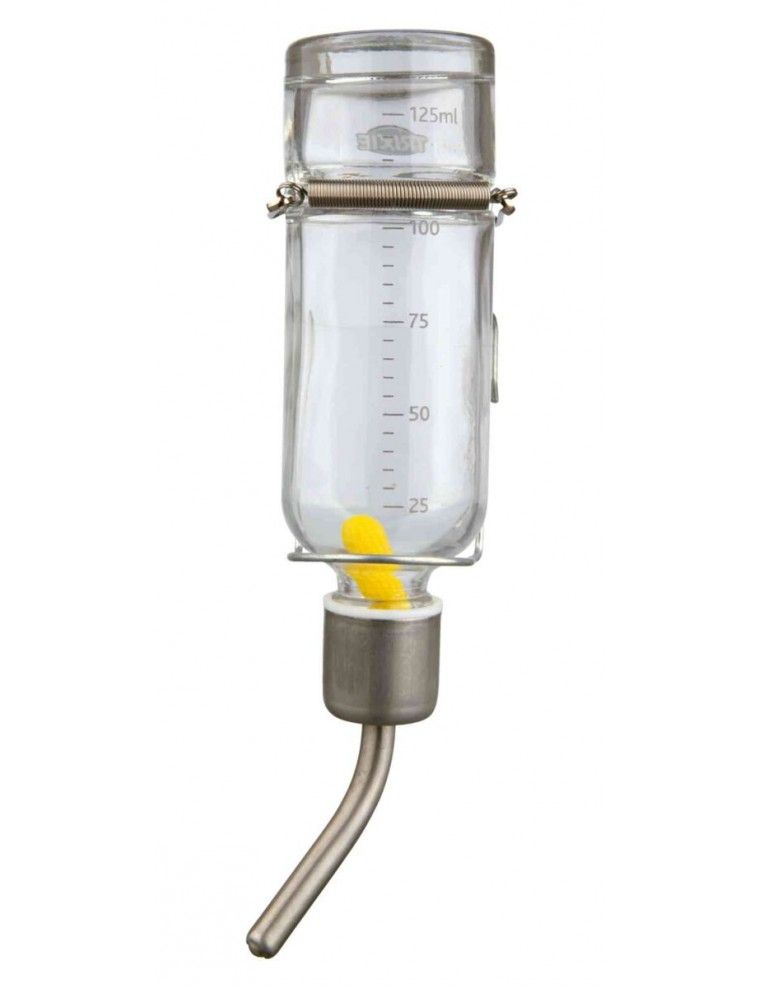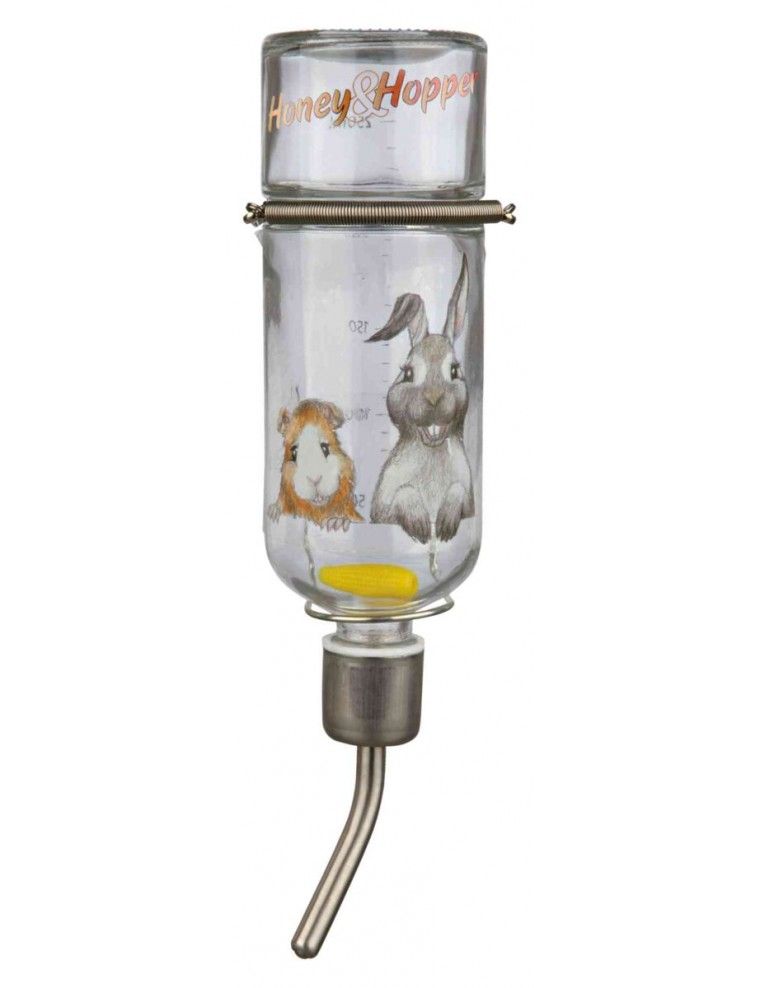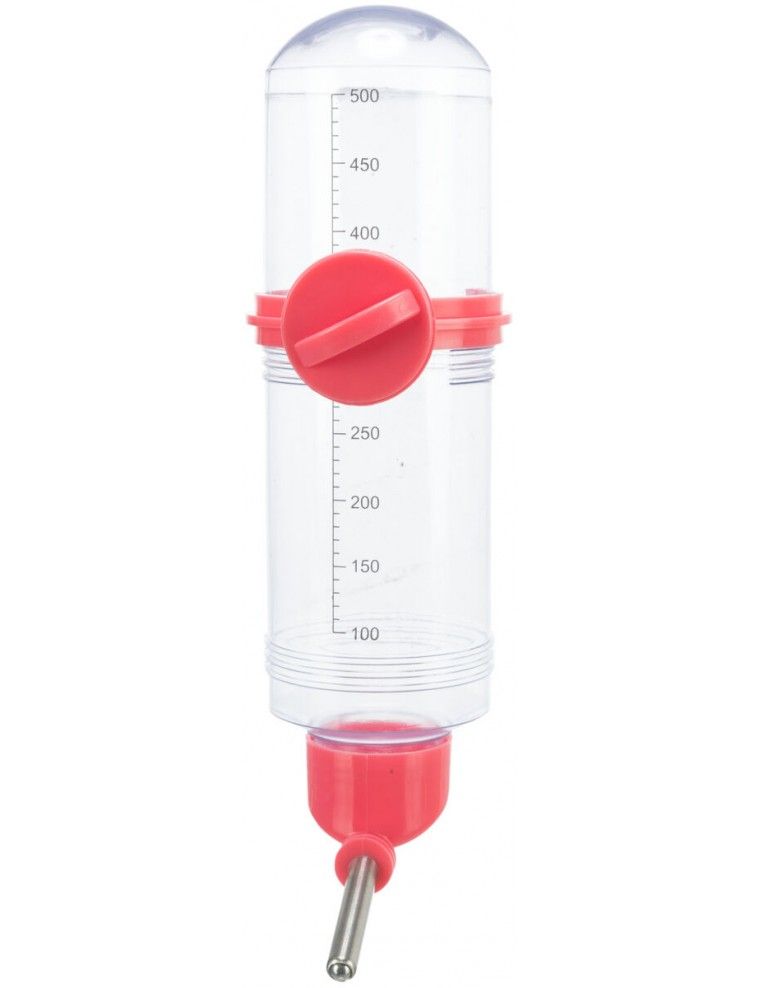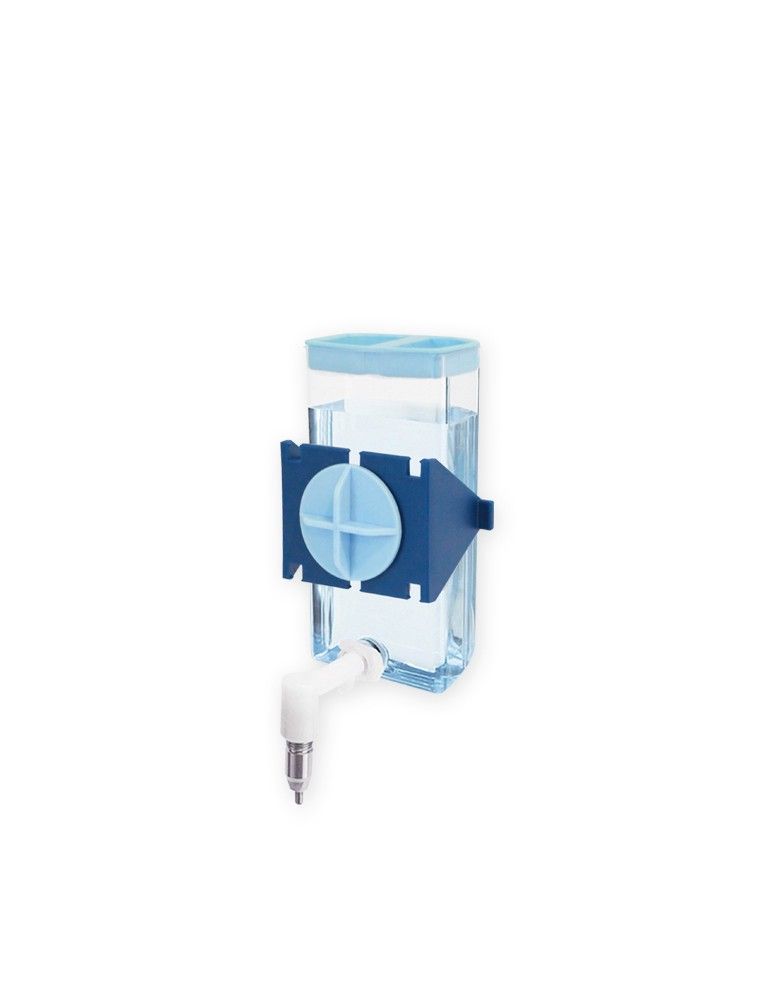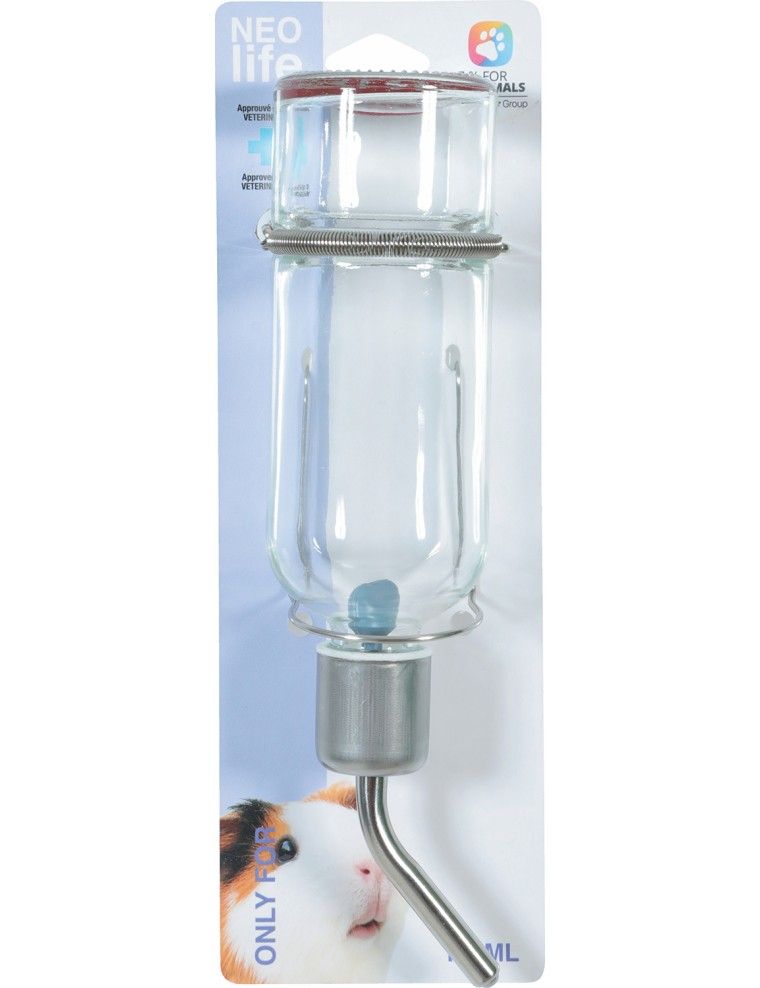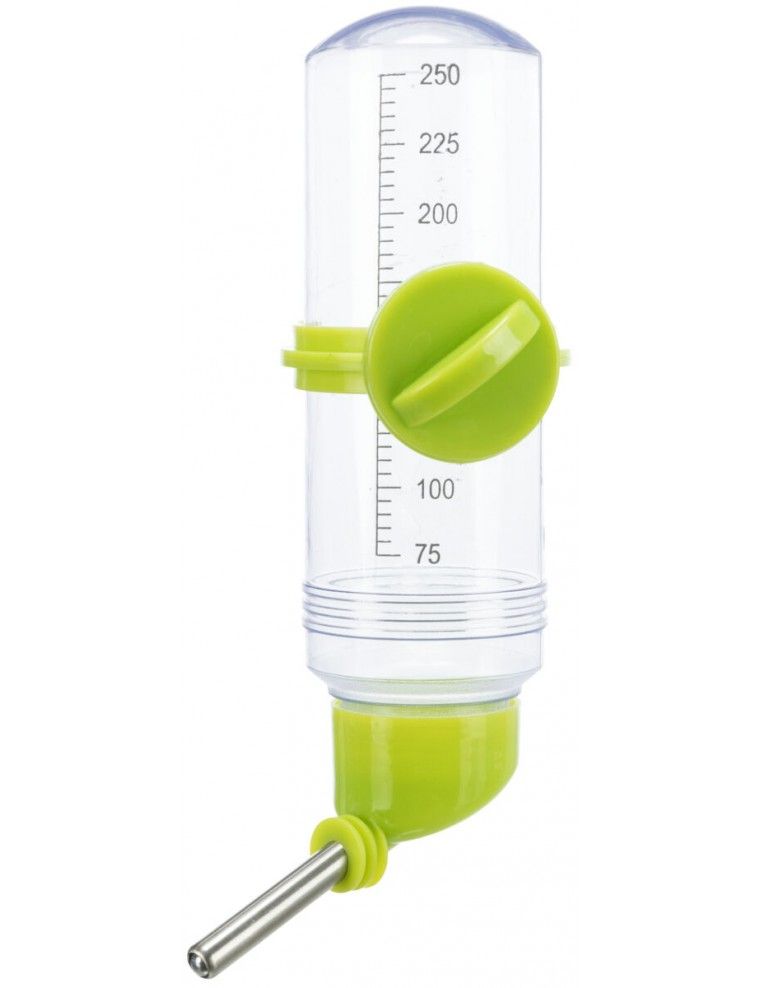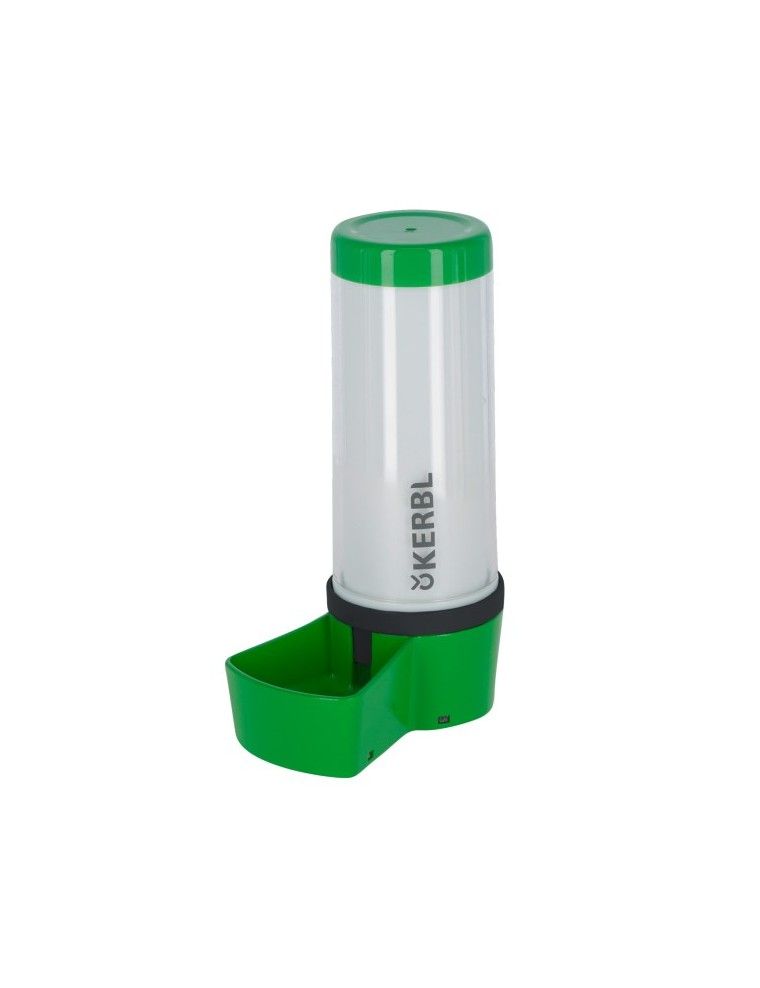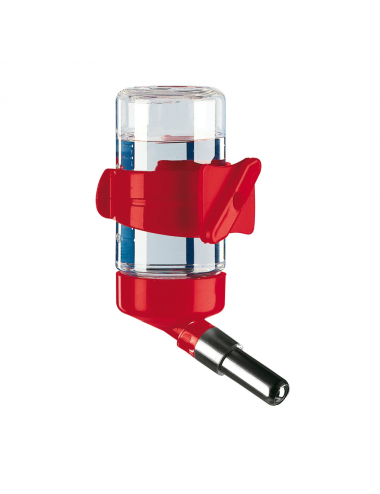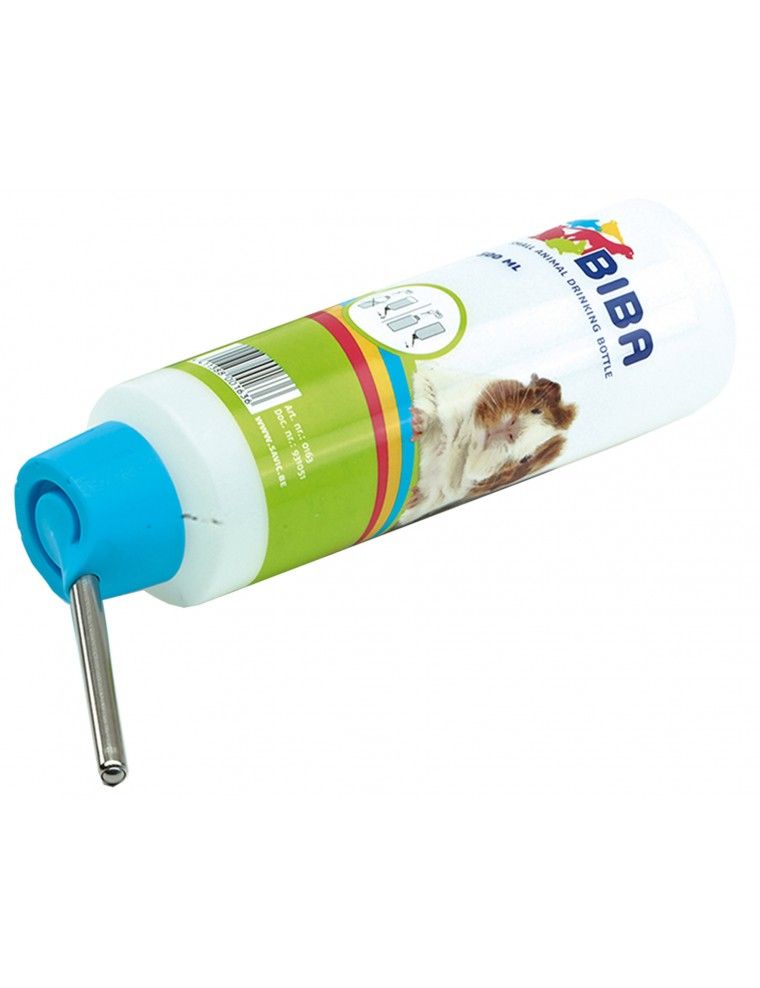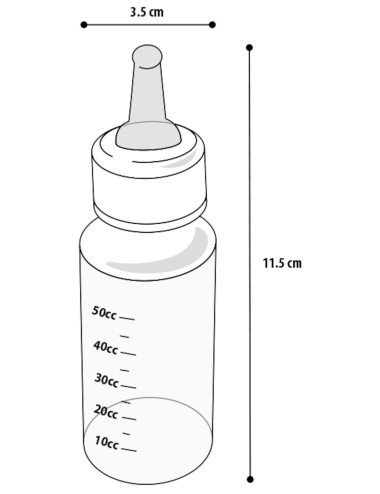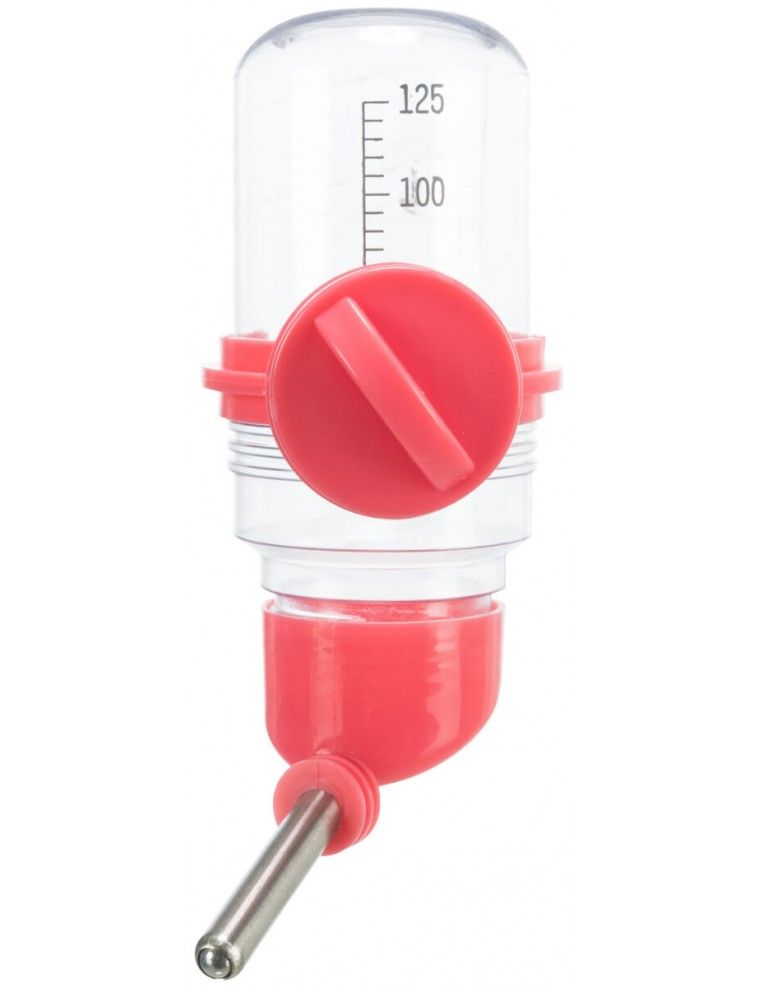- 3 in stock
Feeding bottle Rabbit
The choice of bottle for the rabbit
At Le Petit Rongeur, hydration of your rabbit is at the heart of our concerns. With a selection of bottles from the brands Ferplast , Kerbl , Hamiform , Trixie , Vadigran , and Zolux , we offer watering solutions adapted to each rabbit. Available in glass and plastic, our bottles guarantee continuous clean and fresh water, essential to the well-being and health of your companion.
We would like to remind you that the use of bottles in rabbits can lead to various health problems, including postural disorders due to the need to stand on the hind legs, dental problems linked to unnatural sucking movements, as well as a buildup of bacteria due to difficulty cleaning, increasing the risk of infections. Additionally, some rabbits may have difficulty drinking from a bottle, risking dehydration. In comparison, bowls offer a more natural and safe method of hydration, avoiding these risks to the health of rabbits.
Bottle Feeding Benefits: Cleanliness and Convenience
The bottle has several advantages over the traditional bowl. Attached to the bars of the cage, it prevents any overturning, thus keeping your rabbit's litter box dry and clean. In addition, the ball system at the end of the tube ensures controlled water distribution, preventing leaks while allowing your rabbit to hydrate at their convenience.
Choosing the right material: Glass vs Plastic
The choice of material is crucial for your rabbit's bottle. Glass, hygienic and resistant to bites, is ideal for more active rabbits or those with a tendency to gnaw. Easy to clean, it offers superior durability. Plastic, on the other hand, offers an economical and lightweight option, but requires more frequent replacement to ensure optimal hygiene.
Ease of use and maintenance
Our bottles are designed for easy use and maintenance. Models with a top filling system simplify the task of maintaining a sufficient water reserve, thus avoiding complex handling. Regular cleaning is essential to prevent bacteria build-up and ensure your rabbit has access to clean water at all times.
Adapt to every need
Each rabbit has specific hydration needs. Our range of bottles, offering different capacities and fixing systems, allows us to respond to the morphology and behavior of each animal. Whether your rabbit lives in a large open cage or a smaller space, you will find the right bottle for its environment.
Feeding bottle
The choice of bottle for the rabbit
At Le Petit Rongeur, hydration of your rabbit is at the heart of our concerns. With a selection of bottles from the brands Ferplast , Kerbl , Hamiform , Trixie , Vadigran , and Zolux , we offer watering solutions adapted to each rabbit. Available in glass and plastic, our bottles guarantee continuous clean and fresh water, essential to the well-being and health of your companion.
We would like to remind you that the use of bottles in rabbits can lead to various health problems, including postural disorders due to the need to stand on the hind legs, dental problems linked to unnatural sucking movements, as well as a buildup of bacteria due to difficulty cleaning, increasing the risk of infections. Additionally, some rabbits may have difficulty drinking from a bottle, risking dehydration. In comparison, bowls offer a more natural and safe method of hydration, avoiding these risks to the health of rabbits.
Bottle Feeding Benefits: Cleanliness and Convenience
The bottle has several advantages over the traditional bowl. Attached to the bars of the cage, it prevents any overturning, thus keeping your rabbit's litter box dry and clean. In addition, the ball system at the end of the tube ensures controlled water distribution, preventing leaks while allowing your rabbit to hydrate at their convenience.
Choosing the right material: Glass vs Plastic
The choice of material is crucial for your rabbit's bottle. Glass, hygienic and resistant to bites, is ideal for more active rabbits or those with a tendency to gnaw. Easy to clean, it offers superior durability. Plastic, on the other hand, offers an economical and lightweight option, but requires more frequent replacement to ensure optimal hygiene.
Ease of use and maintenance
Our bottles are designed for easy use and maintenance. Models with a top filling system simplify the task of maintaining a sufficient water reserve, thus avoiding complex handling. Regular cleaning is essential to prevent bacteria build-up and ensure your rabbit has access to clean water at all times.
Adapt to every need
Each rabbit has specific hydration needs. Our range of bottles, offering different capacities and fixing systems, allows us to respond to the morphology and behavior of each animal. Whether your rabbit lives in a large open cage or a smaller space, you will find the right bottle for its environment.
- 4 in stock
- 3 in stock
- 12 in stock
- 3 in stock
- 4 in stock
- 1 in stock
- in replenishment
- 12 in stock
- 3 in stock
- 4 in stock
Questions / Réponses
Un biberon peut aider à maintenir l'eau propre plus longtemps en la protégeant des débris, du foin, et d'autres contaminants qui peuvent tomber dans une gamelle. Il prévient également le renversement de l'eau, gardant l'enclos du lapin plus sec et plus propre. Cependant, certains lapins préfèrent boire d'une gamelle, donc il est bon d'observer les préférences de votre animal.
Le biberon doit être installé à une hauteur accessible pour le lapin, généralement au niveau de sa tête ou légèrement plus haut, pour qu'il puisse boire confortablement en se tenant debout. Assurez-vous qu'il est solidement fixé à la cage pour éviter qu'il ne bouge ou ne tombe. Testez le biberon pour vous assurer que l'eau s'écoule correctement lorsque le lapin lèche la bille ou la valve.
L'eau dans le biberon doit être changée tous les jours, même si elle semble propre, pour garantir que votre lapin ait toujours accès à de l'eau fraîche et propre. Cela aide également à prévenir la croissance de bactéries dans le biberon.
Nettoyez le biberon et le tube d'alimentation au moins une fois par semaine avec une brosse à biberon et de l'eau chaude savonneuse. Rincez bien pour éliminer tout résidu de savon. Vous pouvez également utiliser une solution de vinaigre dilué pour désinfecter le biberon avant de le rincer abondamment à l'eau claire.
Si votre lapin ne boit pas de son biberon, vérifiez d'abord que l'eau s'écoule correctement. Certains lapins peuvent avoir besoin de temps pour s'habituer à un biberon s'ils n'en ont jamais utilisé auparavant. Encouragez-le en tapotant doucement la bille ou la valve pour montrer qu'il en sort de l'eau. Si le problème persiste, envisagez de proposer une gamelle d'eau pour voir si votre lapin préfère cette option.
Choisissez un biberon conçu spécifiquement pour les petits animaux, fabriqué en plastique non toxique et résistant. Les biberons avec un système de valve à bille sont populaires car ils préviennent les fuites mieux que ceux avec un système de goutte-à-goutte. Assurez-vous que le biberon est de taille appropriée pour votre lapin, avec une contenance suffisante pour sa consommation quotidienne d'eau.
Non, les lapins doivent avoir un accès constant à de l'eau fraîche et propre 24 heures sur 24. Ne laissez jamais votre lapin sans eau pendant la nuit. Une déshydratation, même sur une courte période, peut être dangereuse pour la santé de votre lapin.
